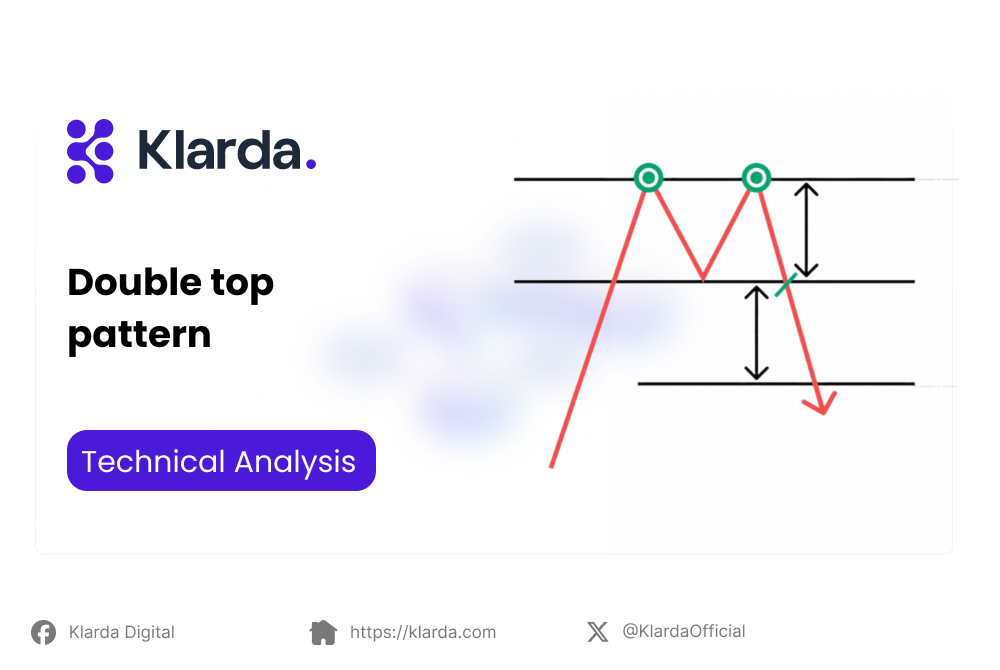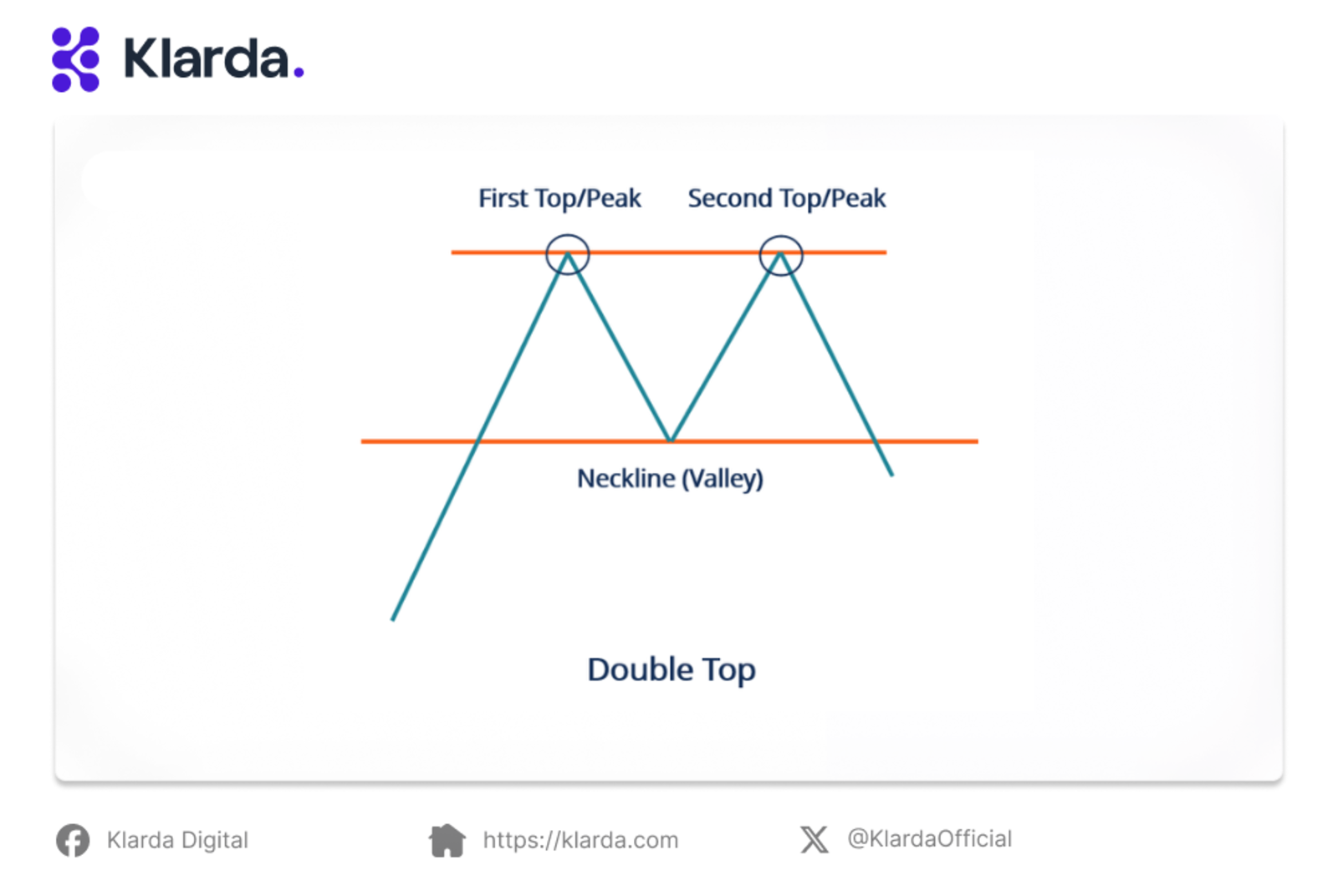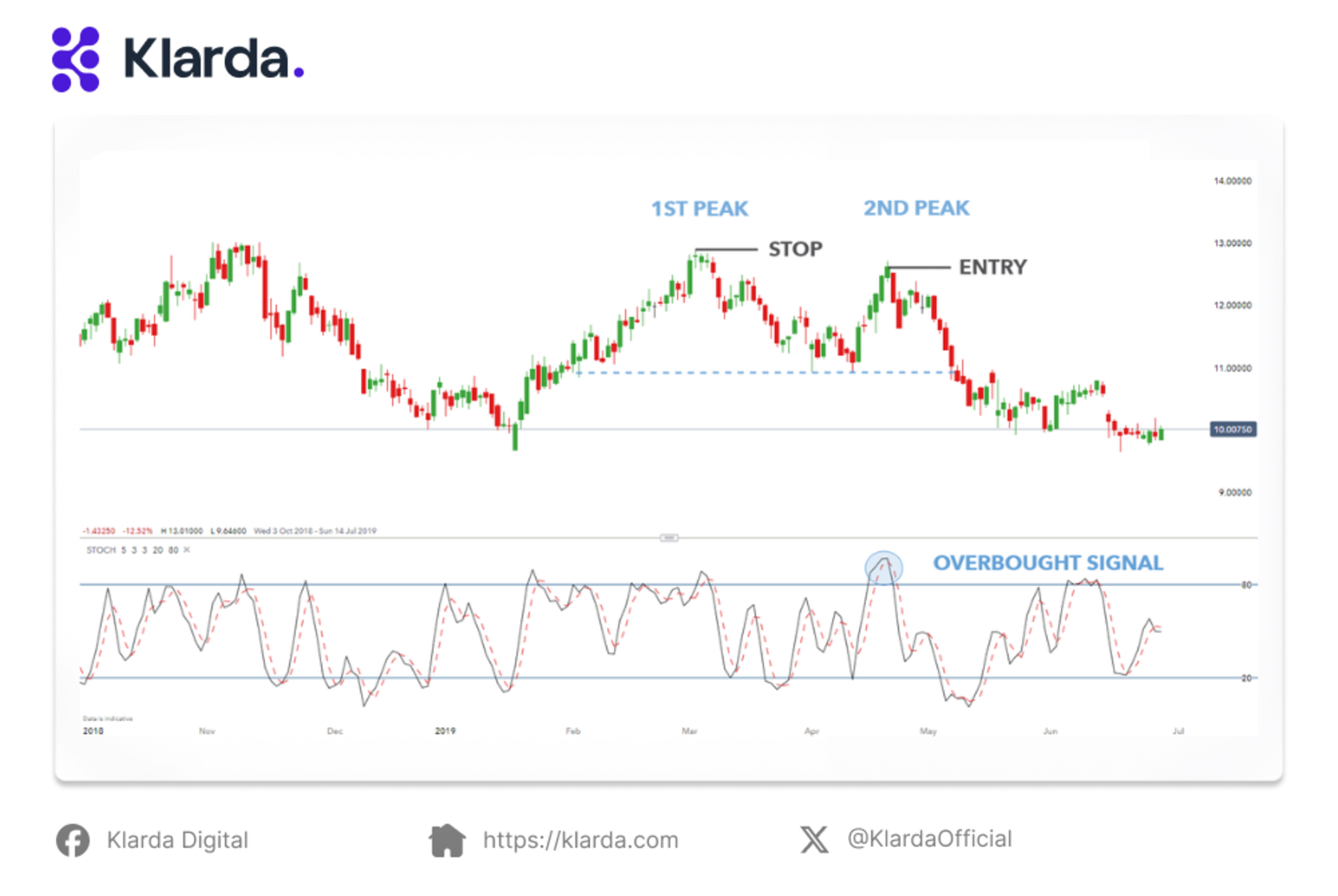Double Top Pattern
Learn how to identify and trade the double top pattern, a key bearish signal in technical analysis for trend reversals.
The double top is a well-known technical analysis pattern often seen before a trend reversal in an uptrend. Common across various timeframes and assets, this pattern can sometimes lead to confusion among traders.
In this article, we'll guide you through identifying the double top formation on price charts and how to trade it to develop your trading strategy.
KEY TAKEAWAYS
- A double top is a bearish reversal pattern in technical analysis. Identifying this pattern can be challenging because confirmation is needed through a break below the support level.
- While a double top indicates a bearish outlook, a double bottom signals a bullish trend.
- Double top patterns typically involve an upward movement, followed by an initial peak, a pullback to form a trough, a second peak, and then a neckline.
- Traders may consider shorting after the support level is broken or placing smaller trades, as the profit potential from double tops can be limited.
WHAT IS DOUBLE TOP PATTERN?

What is double top pattern
The double top pattern is a frequently observed chart pattern in technical analysis within financial trading. This pattern suggests that the current trend might reverse, either in the short term or long term. Double tops can be seen across various financial markets, including those for currencies, stocks, commodities, and other assets.
DOUBLE TOP PATTERN COMPONENTS

Double top pattern components
To identify double-top formations, look for the following key elements:
- Uptrend: The price should be in a clear upward trend before the formation of the double-top pattern, characterized by higher highs and higher lows.
- Two Peaks: This pattern consists of two distinct peaks that are approximately equal in price. These peaks act as resistance levels where the upward movement is halted, and the price begins to decline.
- Trough or Valley: Between the two peaks, a trough or valley forms, indicating a brief period of price decline or sideways movement.
- Neckline: The neckline is a horizontal line drawn by connecting the lowest points of the troughs or valleys. This line acts as a support level and plays a crucial role in confirming the pattern.
- Break of Neckline: A key feature of the double-top pattern is the break below the neckline. When the price falls below this line, it suggests a possible trend reversal, confirming the pattern.
- Volume: Volume analysis can provide additional insights into the pattern. Typically, volume tends to decrease as the two peaks form and then increase when the price breaks below the neckline. This surge in volume during the breakdown can lend credibility to the pattern.
- Price Target: To estimate a potential price decline, measure the vertical distance between the peaks and the neckline. Project this distance downward from the point where the neckline is breached to determine a rough target for the price drop.
HOW TO TRADE DOUBLE TOP PATTERN?

Double top pattern in trading
There are three main strategies for trading a double top pattern:
- Break of the Neckline: Wait for the price to drop below the neckline, confirming the double top and signaling a potential trend reversal. Initiate a short trade or sell position, placing a stop-loss above the recent swing high.
- Set a profit target by measuring the vertical distance from the highest peak to the neckline and projecting it downward from the neckline.
- Retest of the Neckline: After the price breaks below the neckline, it may retest this level before continuing down.
Enter a short trade if the price pulls back to the neckline and shows bearish signals, such as a bearish candlestick or a lower high. Set a profit target based on the pattern’s height or nearby support levels and place a stop-loss above the recent swing high.
Using Additional Indicators: Enhance the double top pattern’s reliability with indicators like MACD or RSI showing bearish divergence. After the neckline break and indicator confirmation, enter a short trade, using the same stop-loss and profit target methods.
STRENGTHENS AND WEAKNESSES

Double top vs double bottom pattern
Strength
- Clear Reversal Signal: When the price breaks below the neckline, it typically indicates a strong bearish reversal.
- Reliable Pattern: The double top has a relatively high success rate in predicting trend reversals, especially when accompanied by other technical indicators.
- Defined Risk and Reward: The neckline serves as a clear support level, providing a well-defined entry point and stop-loss level.
- Versatility: The double top pattern can be found in various timeframes, from intraday charts to long-term weekly or monthly charts.
Weaknesses
- Subjectivity of Formation: Determining the exact high points and the neckline can sometimes be subjective, leading to differing interpretations.
- False Breakouts: The price may briefly break below the neckline but then reverse, leading to a false breakdown and continued uptrend.
- Time-Consuming: It may take time for the pattern to fully form and for the price to break below the neckline, potentially missing early opportunities.
- Counter-Trend Trading: Trading against a prevailing uptrend can be risky, especially if the trend is strong.
THE BOTTOM LINE
Traders and analysts often interpret the double-top pattern as a bearish signal, indicating that an upward trend may be losing momentum and a price decline is likely. Confirmation of the pattern is often achieved when the price breaks below the neckline, a horizontal line drawn at the lows of the troughs between the peaks. This break typically serves as a signal to initiate short positions or sell, with the expectation of a continued price drop.
For a streamlined trading experience, consider using Klarda to manage your trades efficiently and stay ahead in the market. Klarda's advanced tools and features can help you execute strategies and react swiftly to market signals.
Explore Klarda today to enhance your trading performance.
Updated 7 months ago